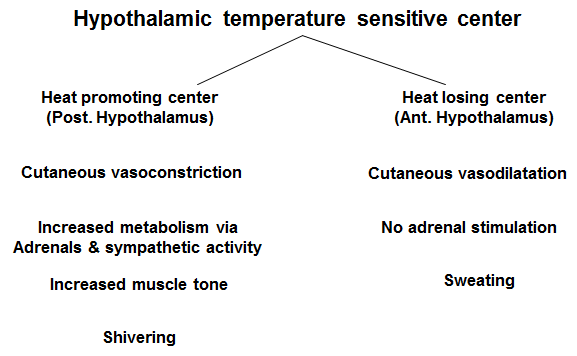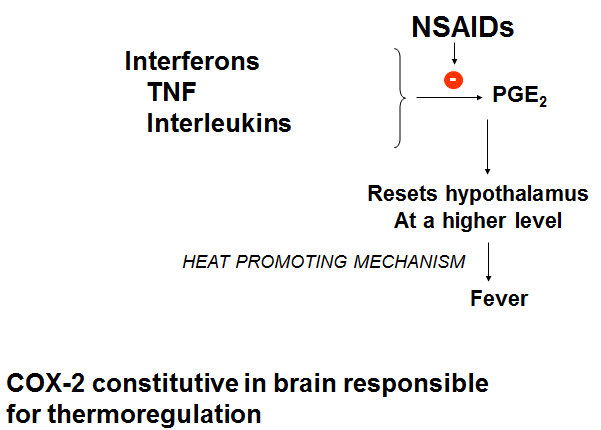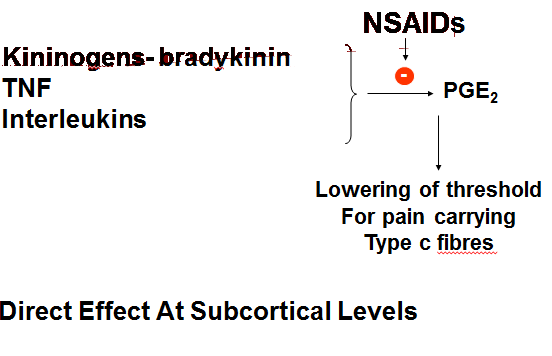There has been purposeful effort to differentiate these from glucocorticoids, as glucocorticoids are the ultimate answer but with huge side effects, as each and every cell is affected.
These drugs are differentiated because they are also anti-inflammatory, but lack some of the side effects of glucocorticoids.
NSAIDS are also known as non-opioid analgesics. Pain is the most common symptom for which a person comes to the doctor, fever being the second. Both can be treated by this group, so referred to as the non-opioid analgesics.
They are also anti-pyretic, also known as non-narcotic analgesics, due to the fact that dependence may occur with other analgesics.
They are also known as aspirin like drugs, as aspirin is the first drug in the group discovered.
History
Aspirin was the first drug discovered. Willow tree bark was used for pain relieving effect from the time of Hippocrates, but in 1753 a British clergyman, Raven Admin Steve first wrote about powdered form of bark of Willow tree used for pain, fever and arthritic pain.
Salicylic acid is irritant and difficult to take orally. Hoffmann, a German in 1899, manufactured acetyl salicylic acid (aspirin –a from acetyl and spiria is a plant). Ever since it is being used continuously. Newer uses are being discovered every few years, thus“aspirin a hundred years young”. Every new drug discovered is compared with aspirin.
Cyclo-oxygenase enzyme-isoforms
Classification is based on the mechanism of action. It is known that this group inhibits cyclo-oxygenase enzyme. There are three isoforms:
- COX-1
- COX-2
- COX-3
- COX-1
- homeostatic enzyme which tries to keep internal conditions constant
- constitutive –present in active form in blood, stomach and kidneys, performing important functions
I. Blood
Under influence of prostaglandins, prostacyclines and thromboxanes (most powerful substance to cause platelet aggregation, which is the first step in injury to micro vessels to control bleeding).
II. Stomach
Helps in formation of prostaglandins and prostacyclines, which:
i. On one hand inhibit acid production
ii. Increase mucous production rich in bicarbonates, which is protective
iii. Increase blood flow to stomach mucosa and epithelial cells to speed up reconstitution process.
III. Kidneys
In certain cases, auto regulation of blood in kidneys takes place under influence of prostaglandins, which themselves are under influence of cyclo-oxygenase 1.
- COX-2 inducible (constitutive in kidneys and brain)
Not present in active form but in inducible form. There are two places where it is constitutive (brain and kidneys). Otherwise induced by
1) Oxidative stress
2) Injury
3) Ischemia
4) Seizures
5) Neuro-degenerative disorders
COX-2 is responsible mainly for inflammation.
- COX-3
Only present within brain.
Classification
Classification is based on inhibition of COX, either non-selectively or selectively.
Drugs are chemically different, but have the same mechanism of action.
Non selective cyclo-oxygenase inhibitors
Salicylates
- Aspirin
- Sodium salicylate
- Diflunisal,
- Choline magnesium trisalicylate
Para amino phenol derivatives
Propionic acid derivatives
- Ibuprofen
- Ketoprofen
- Flurbiprofen
- Naproxen,
- Fenoprofen
Phenyl acetic acid derivatives
- Diclofenac
- Tolmetin
- Ketorolac
Fenamates (anthranilic acid derivatives)
- Mefenamic acid
- Meclofenamic acid
Indole derivatives
Enolic acid derivatives
- Piroxicam
- Tenoxican
Alkanone derivatives
- Nabumetone
Pyrazolone derivatives
- Azapropazone
- Phenylbutazone
Cyclo-oxygenase-2 selective inhibitors
- Celecoxib
- Etoricoxib
- Parecoxib
- Lumaricoxib
- Meloxicam
- Etodolac
- Nimesulide
- Valdecoxib – ? Is associated with increased risk of cardiovascular thrombotic events and stroke so is withdrawn from market.
Inflammation
Definition?
Inflammation is the response of vascular and supporting tissue to injury. There are three phases:
- Acute inflammation
Increased permeability leads to outpouring from vessels, leading to edema and release of various mediators:
- Histamine
- serotonin
- bradykinin
- prostaglandins
- leukotrines
In an effort to control foreign body (offending agent) to wall it off.
- Immune response
Neutrophils and lymphocytes try to control the infection, if controlled inflammation is over.
- Prostaglandins
- Leukotrines
- Complement system c5a are involved
- Chronic inflammation
If infection cannot be controlled, it leads to chronic inflammation. Residual damage takes place e.g. rheumatoid arthritis-damage to joints, synovial membranes. Mediators are different:
- interleukins
- granulocyte-macrophage
stimulating factor (GM-CSF) - tumor necrosis factors (TNF)
- interferons
- platelet derived factors
During inflammation, lot more mediators are released apart from prostaglandins and prostacyclines. Even if they are inhibited, others act as well. Drug has to do more than just inhibiting prostaglandins and prostacyclines.
Whenever disruption of cell membrane occurs, phospholipids are exposed, which are acted upon by phospholipase A2. This converts them to arachidonic acid, which can be processed by:
- Cyclo-oxygenase pathway, producing prostaglandins, prostacyclines and thromboxanes.
- Lipo-oxygenase pathway, producing leukotrines
Mechanism of action
- Anti – inflammatory action
NSAIDS block enzyme cyclo-oxygenase, thus no thromboxanes, prostacyclines or prostaglandins are produced.
Had this been the only mechanism, anti-inflammatory effect would be incomplete. Inside into other mechanisms is rather patchy.
- NSAIDS directly suppress phagocytic system and neutrophils.
- NSAIDS directly suppress migration of neutrophils
- NSAIDS directly suppress production of interleukins
- NSAIDS inhibit the production of superoxides, peroxides and radicles involved in cell damage.
- Anti – pyretic action
Hypothalamus controls temperature in the body. There are two areas:
- Heat promoting area or the posterior hypothalamus
- Heat losing center or the anterior hypothalamus
Mechanism of heat regulation
Antipyretic Action
NSAIDS block the production of prostaglandins, which are responsible for resetting the hypothalamus at a higher level. Thus they reset the hypothalamus back to normal, promoting heat losing mechanisms.
3. Analgesic action
Shared uses of NSAIDS
- Analgesics
Helpful in controlling mild to moderate pain including
- Myalgia
- Headache
- Dental pain
- Arthralgia
- Neuralgia
- Muscle spasm or sprains.
Severe pain is controlled by opioids
- Anti – pyretics
All members do have anti-pyretic actions. Few are used including:
- Paracetamol
- Mefenamic acid
- Ibuprofen
- Anti – inflammatory
Used in conditions like:
- Rheumatoid arthritis
- Osteoarthritis
- Acute gout
- Ankylosing spondylitiss
- Dysmenorrhea
Painful menstruation is due to prostaglandin production, which can be inhibited by this group.
Side – effects
- GIT bleeding
Stomach has important protective mechanism controlled by prostaglandins and prostacyclines:
- Production of mucous rich in bicarbonates.
- Decrease in acid production
- Increase in blood flow to stomach mucosa, helping in repair under control of prostaglandins and prostacyclines, as block production so protective mechanisms are lost.
Wide range of symptoms occur which used chronically including:
- Dyspepsia –mildest form
- GI ulcers –severest form, may bleed and become life threatening.
- Prolonged gestation
Can prolong gestation, especially in last trimester of pregnancy. At time of parturition, there is role of prostaglandins, prostacyclines, as their production is blocked, so there is no parturition.
Also increase the incidence of post maturity.
- Inhibition of PG mediated renal blood flow
in normal role of PG is not that important, but in certain conditions, like chronic renal failure, cirrhosis of liver, CCF, when blood flow is compromised, PG play important role in auto regulation of renal blood flow.
As PG are inhibited, result is worsening of renal functions.
- Blockage of platelet aggregation
Thromboxane A2 is inhibited by COX, so aggregation does not take place. This is made use of in the use of low dose aspirin in ischemic heart disease. This can promote bleeding (e.g. from stomach ulcers). Here the side effect is used as therapeutic use.
- Hypersensitivity reactions
Arachidonic acid has two pathways. When COX is inhibited, lipo-oxygenases and leukotrines are responsible for allergic reactions.
These include:
- simple articaria
- angioedema
- bronchoconstriction
- asthma
- anaphylactic reaction –rarely
 howMed Know Yourself
howMed Know Yourself







